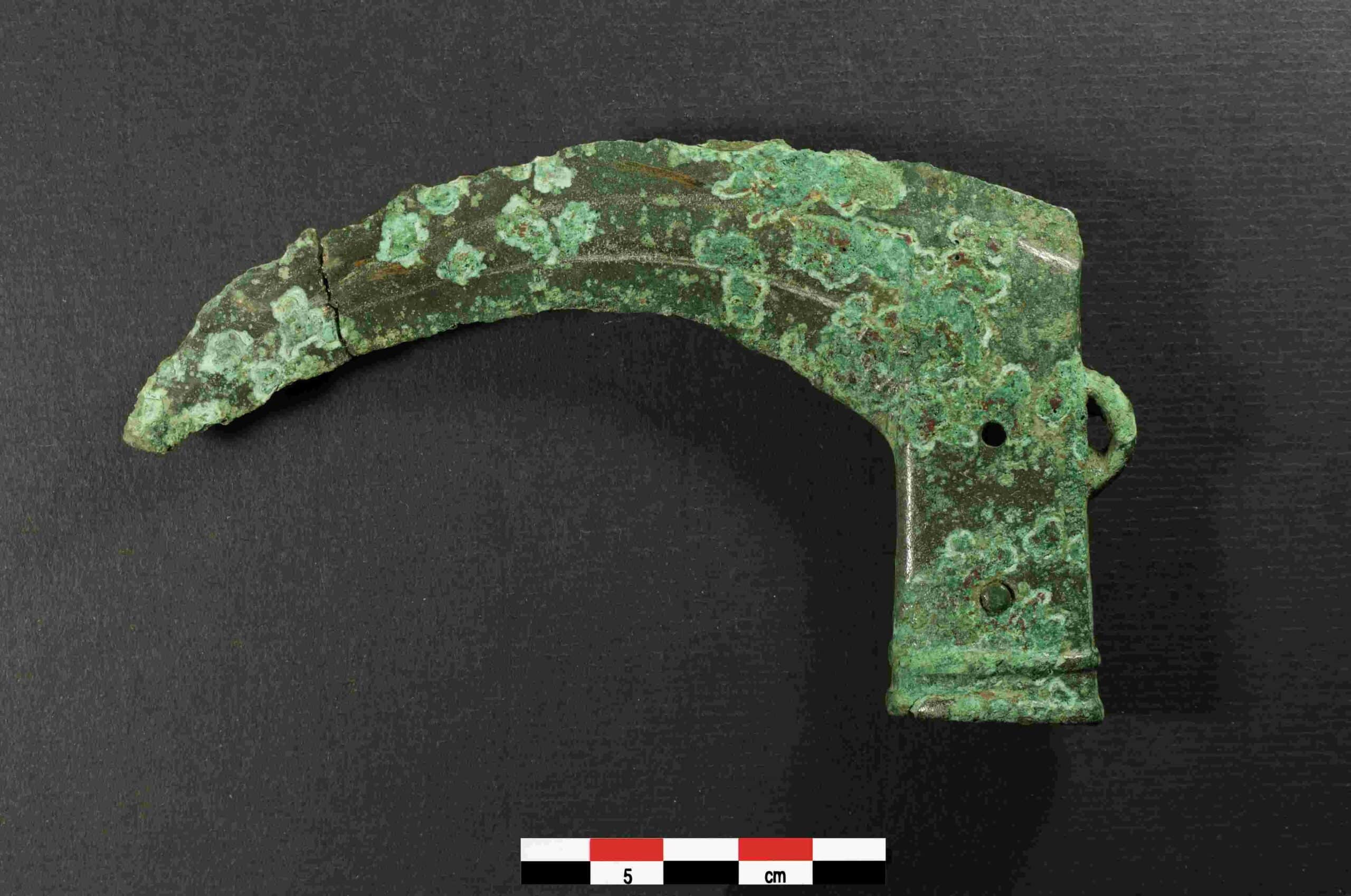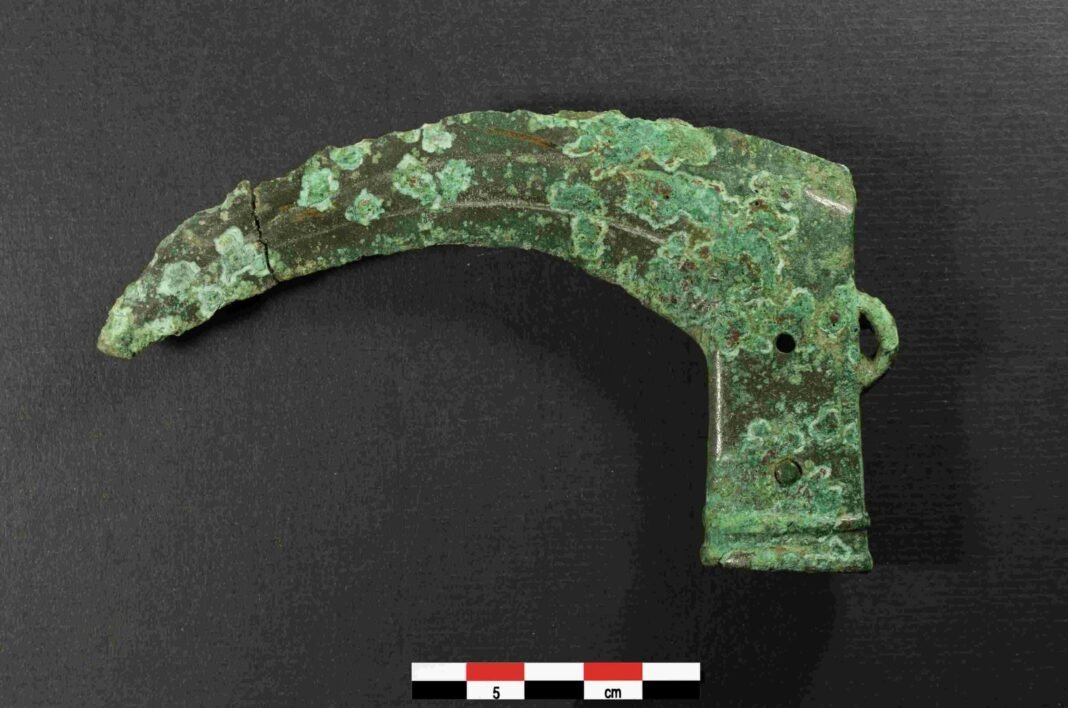
Archaeologists have uncovered a rare Bronze Age sickle in France at the Suret site in Val-de-Reuil, in the lower Seine valley. Dating to the Atlantic Late Bronze Age between 1200 and 600 B.C., the artifact is one of only a handful of such finds recorded in the country.
The sickle is made of copper alloy and remains largely intact, although its tip has broken off. The missing piece was recovered alongside the main artifact. The chipped edges on the curved blade suggest that it was used extensively.
The socket features a side ring and two holes that were once used to secure a wooden handle with pegs. One peg, still lodged in place, appears to be made of bone. Traces of the handle survive inside the socket.
Scientific analysis could not determine the exact type of wood, but tests narrowed the possibilities to willow, poplar, black alder, hornbeam, or hazel. Willow is considered the most likely candidate.
A rare find with a narrow geographic spread
Socketed sickles of this type are believed to have originated in the British Isles and are seldom found in France. Only around ten examples are known, concentrated along the Channel coast in the Somme and Seine valleys, and on the Atlantic coast.

Within the Seine valley, only two other specimens had been documented before this discovery — one from Vernon in Eure and another recovered from the river in Paris. The new find not only broadens the archaeological record for the region but also offers insight into the movement of goods during the Late Bronze Age.
Evidence of cross-channel trade
The sickle points to active trade networks linking communities on both sides of the Channel at the end of the Bronze Age. These connections relied heavily on river systems such as the Seine, which served as key transport routes for people, goods, and raw materials.
Archaeologists say the artifact is also part of a broader pattern in which metalwork traveled significant distances during this period, reflecting both economic and cultural ties across the Atlantic seaboard.
A shift in the scale of metal exchange
The Atlantic Late Bronze Age was marked by a sharp increase in the trade of bronze metalwork. In earlier periods, such items were exchanged in small numbers, often as diplomatic gifts between elites. From around 1200 B.C., the archaeological record shows a dramatic rise in both the quantity and frequency of metalwork circulation.
This shift is seen as the emergence of an early commercial trade system, replacing the more limited exchange networks of earlier centuries. The newly unearthed sickle, both in its craftsmanship and its journey from the British Isles to the lower Seine valley, stands as a rare and tangible link to that transformative era.


